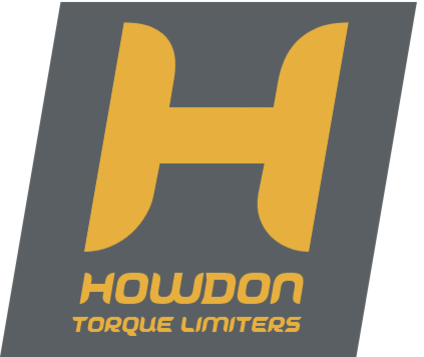What are Torque Limiters?
A Torque Limiter acts as an overload protection device for all types of mechanical equipment preventing excessive loads damaging the machine components and lost production.
Although electronic current limiters have been considered, modern machinery has become more dynamic with abrupt deceleration of the rotating mass caused by unintentional jamming or the application of a dynamic braking system at a faster rate than the drive can accept.
Drive systems operating at low output speeds develop very large torques and excess torque will cause extensive damage to the gearing, drive shafts and couplings.

The fitting of a mechanical Torque Limiter in the drive system gives the best level of protection, reducing downtime and subsequent expensive loss of production.
Howdon have refined the traditional Shearpin by designing a unique, easy-to-use pin to give reliable overload drive protection. Our Wedgepin™ design has been developed over a number of years and is manufactured to the highest standards, using material quality control and testing procedures.
Howdon have produced compact, simple-to-maintain Torque Limiters for industries all over the world with a comprehensive standard range, and we also have a reputation for producing special designs to meet specific customer requirements.
Talk The Torque - Your guide to Howdon Torque Limiters and Wedgeguard™
Our Range Of Torque Limiters
WHICH TORQUE LIMITER IS RIGHT FOR MY DRIVE?
INSTALLATION & MAINTENANCE NOTES
Howdon Wedgegard® Torque Limiter Selection
1. Decide the position of the Wedgegard i.e. the preferred position is on the low speed or final drive shaft, confirm there is adequate accessibility to change Wedgepins.
2. Using the simple formula to calculate the theoretical driving torque for the position chosen :
Torque (lbf.ins) = H.P. multipied by 63025 divided by r.p.m.
Torque (Nm) = kW multiplied by 9550 divided by r.p.m.
3. If the Wedgegard is to be fitted to a Universal Joint Drive Shaft, using the shaft reference select the size of the Wedgegard spacer from the Data Sheet. For Chain or Coupling Drives choose the Wedgegard from the specific Data sheet checking the shafts/sprocket or pulley/coupling can be accommodated.
4. If the release (overload) torque to not known the following points need to be considered :
the weakest component of the drive system to be protected
the product or system to be protected
5. Using the torque table for the required Wedgegard Torque Limiter select the release torque required, this will indicate the Wedgepin or pins to be fitted. If there is uncertainity regarding the release torque, select a release torque below the driving torque and, with these Wedgepin or pins fitted, install the Wedgegard.
6. The wide range of Wedgepins makes changing the release torque simple, but when increasing the torque always ensure the drive system/product/machinery can accept the higher limit.
7. Always guard rotating machinery, including the Wedgegard Torque Limiter, in accordance with statutory requirements.
Note: You can either complete and submit the online form below, or download the form, complete it offline and then email it to sales@howdon.co.uk.
Wedgegard® Application Data - Online Form






